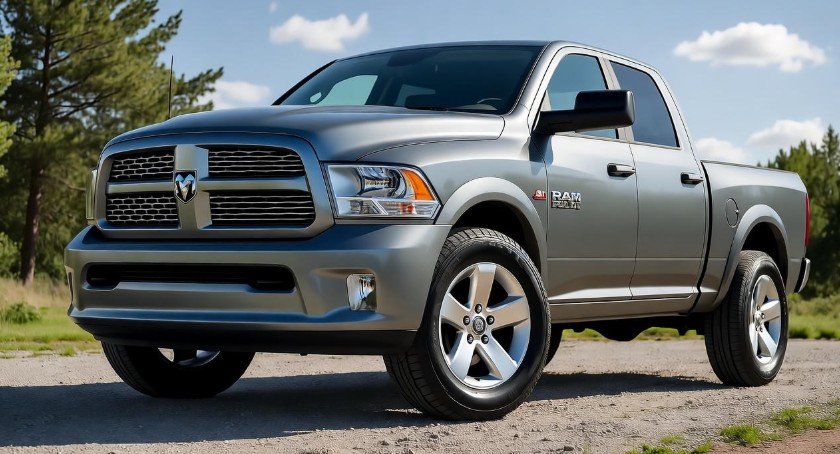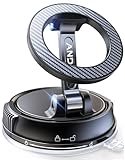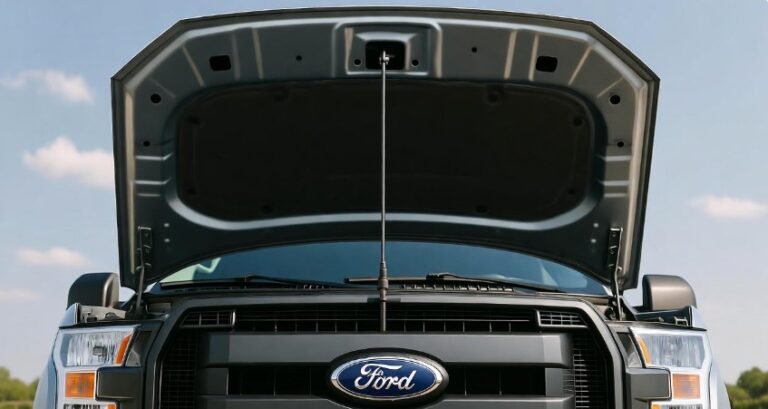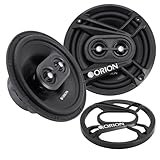What Year Dodge Ram Wheels Are Interchangeable: Unlock the Compatibility

If you own a Dodge Ram, chances are you’ve thought about upgrading your wheels. Maybe you want a more aggressive stance, a better ride, or simply to refresh the truck’s look. But before you start browsing shiny new rims online or at the junkyard, one question probably crosses your mind—what year Dodge Ram wheels are interchangeable? That’s a question many truck enthusiasts and owners face, especially with how much the Ram lineup has evolved over the years.
Swapping wheels isn’t just about style—it’s about safety and precision. A mismatched wheel can throw off your alignment, affect your handling, or even cause brake and suspension issues. The good news? Dodge has kept many consistent specs through generations, meaning some Ram wheels can indeed be interchanged between different years. But like most things automotive, the details matter.
Let’s dive deep into this wheel compatibility mystery, break it down generation by generation, and uncover which years can share the same wheels without a hitch.
Understanding Dodge Ram Wheel Compatibility
Think of wheel compatibility like finding the perfect pair of shoes. The size might fit, but if the shape or design is slightly off, it’s just not comfortable. Wheels are similar. While two Dodge Rams might share a bolt pattern, other factors—like offset, backspacing, and center bore size—play just as important a role.
The Dodge Ram, since its debut in 1981, has seen significant design changes. Over the decades, engineers updated not only the look but also the mechanics of the truck. With each generation, the wheel size, lug nut pattern, and weight capacity evolved to match the growing power and towing capabilities.
Here are some key factors that determine whether one Ram’s wheels will fit another:
-
Bolt pattern: Refers to how many lug nuts the wheel uses and the distance between them.
-
Offset: Determines how far the wheel sits from the suspension or fender.
-
Backspacing: Measures how deep the mounting point is compared to the wheel’s edge.
-
Hub bore: The size of the hole that fits over the vehicle’s hub.
A mismatch in any of these could mean your wheels won’t fit correctly—or worse, could cause unsafe driving conditions. Understanding these basics is the first step before you even think about swapping.
The First Generation (1981–1993): The Early Days of Dodge Ram
The first-generation Dodge Ram—rugged, boxy, and unmistakably classic—set the foundation for what the brand would become. These trucks rolled off the line with a 5×139.7mm bolt pattern, which became a staple for years to come. Wheel sizes typically ranged from 15 inches to 17 inches, depending on trim and configuration.
If you own one of these older Rams, you’ll find some flexibility within the same generation. For instance, a 1989 Ram’s wheels would generally fit a 1993 model, provided the offset and tire width match. These trucks were built tough but simple—less electronic complication, more metal-on-metal engineering—which makes wheel interchangeability within this era fairly straightforward.
However, if you’re thinking of slapping on newer-generation wheels, be cautious. While the bolt pattern might look similar, the hub size and stud design changed slightly in later years. That means you could face fitment issues or vibrations if you try to mount modern wheels without spacers or adapters.
The Second Generation (1994–2001): Familiar Bolt Pattern, Subtle Changes
When Dodge redesigned the Ram in 1994, it turned heads across the country. The truck’s bold, big-rig styling made it a favorite among pickup lovers. Interestingly, Dodge decided to keep the same 5×139.7mm bolt pattern, giving a sense of continuity for wheel compatibility.
This decision meant that, technically, wheels from the first and second generations could fit each other—but not always perfectly. The introduction of new trims and suspension setups added complexity. The 1994–1999 models share almost identical wheel specs, making swaps easy and direct. However, 2000–2001 models introduced slight design tweaks that affected the wheel offset and hub bore.
Here’s a quick breakdown of the second-gen specs:
| Year Range | Bolt Pattern | Common Sizes | Notes |
|---|---|---|---|
| 1994–1999 | 5×139.7mm | 15″, 16″, 17″ | Highly compatible across these years |
| 2000–2001 | 5×139.7mm | 16″, 17″ | Slightly different offset, check clearance |
So, if you’re running a 1998 Ram and eyeing wheels from a 2001, it’s doable—but you’ll want to double-check the offset and maybe use a small spacer for proper clearance.
Many truck owners from this era recall experimenting with wheel swaps. A common story in Ram forums goes something like this: someone tries to mount second-gen wheels on a first-gen truck, and while the lugs fit fine, the brake caliper rubs slightly. That’s the kind of small but important detail that makes or breaks a wheel swap.
The Third Generation (2002–2008): The Transition Era
The third generation Dodge Ram marked a turning point in design and engineering. This is when the Ram really started evolving into the modern powerhouse we know today. But with innovation came change—and that includes the wheels.
From 2002 to 2008, Dodge continued to use the 5×139.7mm bolt pattern, but with one big twist: 9/16″ studs replaced the older design, and wheel offset specifications changed drastically. Wheel sizes now ranged from 16 to 20 inches, depending on whether you had a base model or a luxury trim like the Laramie.
However, not all third-gen Rams shared identical compatibility.
-
2002–2005 models had a specific offset and suspension setup that made their wheels unique to those years.
-
2006–2008 models featured revised offsets, meaning the earlier wheels wouldn’t sit properly on later models without adjustments.
So, while the bolt pattern remained consistent, the wheel’s backspacing and offset differences mean you can’t freely swap wheels across the entire generation. A 2003 Ram’s wheels might not fit flush on a 2007 model—and vice versa.
Still, many Ram enthusiasts love this generation because it opened the door for more aftermarket wheel options. You could find a huge variety of designs and finishes, allowing owners to personalize their trucks more than ever.
The Fourth Generation (2009–2018): Wider Range, Greater Compatibility
By the time the fourth-generation Dodge Ram arrived, it had officially cemented its place in the truck world. Power, luxury, and style all came together. The best part? The engineers decided to stick with the 5×139.7mm bolt pattern with 9/16″ studs, just like the previous generation.
This decision brought a welcome relief for Ram owners—it meant many fourth-gen wheels are interchangeable across the entire 2009–2018 range. You could take a 2010 Ram 1500’s wheels and fit them on a 2017 without much hassle. The available wheel sizes expanded, too, from 17 inches up to 22 inches, making customization easier than ever.
There is, however, one important caveat. The heavy-duty trims—like the Ram 2500 and 3500—sometimes came with different offsets and backspacing. Their wheels were designed to handle heavier loads and therefore might not perfectly fit the lighter 1500 models.
Still, for most Ram 1500s, this generation’s wheels are a goldmine of compatibility. The mix of stylish OEM rims and endless aftermarket options means you can change your truck’s look while keeping everything mechanically sound.
The Fifth Generation (2019–Present): The Modern Powerhouse
The fifth-generation Dodge Ram, introduced in 2019, refined everything drivers loved about previous models. Smooth ride, bold look, and yes—wheel options galore. Once again, Dodge kept the 5×139.7mm bolt pattern with 9/16″ studs, continuing its long-standing tradition.
Wheel sizes for these modern Rams range from 18 inches to 22 inches, with countless design variations based on trim—Tradesman, Big Horn, Laramie, Limited, and Rebel all have unique styles. While the bolt pattern remains familiar, differences in offset, hub bore, and weight rating make some wheels incompatible across trims or generations.
For example, a 2020 Ram 1500 Limited wheel might technically fit a 2016 Ram, but the offset could cause slight fender clearance issues. Similarly, the Ram 2500 or 3500 wheels might not fit properly due to heavier-duty suspension setups.
If you’re planning to swap newer wheels onto an older model, always check:
-
Bolt pattern: 5×139.7mm
-
Offset: varies by trim (usually +18mm to +25mm)
-
Hub bore: 77.8mm
-
Stud size: 9/16″
When all these line up, you can mix and match newer Ram wheels with older ones and achieve a factory-level fit and performance.
How to Check Dodge Ram Wheel Compatibility
Before you get too excited about swapping wheels, there’s a critical step: checking compatibility. Think of it like trying on clothes—you might love the style, but if it doesn’t fit right, it’s a disaster waiting to happen. Thankfully, checking Dodge Ram wheel compatibility isn’t rocket science.
Here’s a step-by-step guide:
-
Verify the Bolt Pattern
Every Dodge Ram from 1981 to present uses either a 5×139.7mm bolt pattern. However, note the stud size: older models used smaller studs, while third-generation onward uses 9/16″ studs. Double-check your truck’s stud size to prevent mismatched lug nuts. -
Measure the Wheel Offset
Offset refers to how far the wheel sits from the hub mounting surface. A mismatch can lead to rubbing against fenders or suspension components. Use a measuring tape or consult your truck’s manual for OEM offset specifications. -
Check Backspacing
Backspacing is closely related to offset and affects how the wheel sits inside the wheel well. Too much or too little backspacing can cause handling issues or damage suspension components. -
Confirm Hub Bore Size
Hub bore is the diameter of the hole in the wheel center that fits over the vehicle’s hub. Older and newer Dodge Ram wheels often have the same hub bore, but sometimes aftermarket wheels differ, requiring hub-centric rings for a snug fit. -
Consider Load Rating
This is especially critical for heavy-duty Rams. Wheels not rated for your truck’s weight could fail under load, creating a safety hazard. Always match or exceed your truck’s weight requirements.
By carefully checking these factors, you can confidently swap wheels across generations and trims, maintaining both aesthetics and performance.
Common Mistakes to Avoid When Swapping Dodge Ram Wheels
Even experienced truck enthusiasts sometimes stumble when swapping wheels. Here’s a quick list of common pitfalls to avoid:
-
Ignoring Offset Differences: Even if the bolt pattern matches, a mismatched offset can cause fender rubbing or poor alignment.
-
Overlooking Load Ratings: Using wheels that aren’t rated for your truck’s weight can be dangerous, especially on heavy-duty Rams.
-
Skipping Test Fitting: Always mount one wheel first to check for clearance issues before committing to all four.
-
Neglecting Lug Nuts and Studs: Ensure the studs and lug nuts match perfectly; using the wrong size can strip threads or cause loosening.
-
Assuming All Generations Are Interchangeable: While Dodge maintained the bolt pattern, offset, backspacing, and hub bore differences can vary widely across generations.
Keeping these mistakes in mind will save time, money, and headaches when upgrading your wheels.
Expert Tips for Swapping Dodge Ram Wheels
From personal experience and talking with other Ram enthusiasts, a few expert tips can make the process smoother:
-
Use Hub-Centric Rings if Needed: These ensure a snug fit for aftermarket or cross-generation wheels, reducing vibration.
-
Start with One Wheel: Test fit a single wheel to make sure everything lines up correctly.
-
Consult Your Truck’s Manual: It might feel old-school, but OEM specs are gold when it comes to safety and performance.
-
Think About Tires Too: Swapping wheels often requires tire adjustments. Make sure your tire size complements the wheel size to avoid speedometer errors or rubbing.
These tips may seem small, but they prevent major headaches later. After all, a smooth ride is about more than just looking good—it’s about safety, reliability, and driving confidence.
Why Interchangeable Wheels Matter
You might be wondering: why go through all this effort just to swap wheels? The answer is simple—flexibility, cost savings, and personalization.
-
Flexibility: Knowing which wheels fit multiple year models allows you to repurpose old wheels when upgrading. This is particularly useful if you own multiple Rams across generations.
-
Cost Savings: Instead of buying an entirely new set, you can often reuse wheels from another vehicle or purchase used OEM options.
-
Personalization: Wheel choice dramatically affects a truck’s look. Interchangeable options mean more freedom to experiment with different styles and finishes.
Many Ram owners share stories about how a simple wheel swap completely transformed their truck’s appearance—turning a functional pickup into a head-turning machine. Wheels aren’t just accessories; they’re an extension of your truck’s personality.
Frequently Asked Questions
1. Are Dodge Ram Wheels Interchangeable Between Different Years?
Yes, many Dodge Ram wheels are interchangeable between years, provided they share the same bolt pattern, offset, and hub specifications. Always check for trim-specific differences, especially on heavy-duty models.
2. Can I Fit Newer Dodge Ram Wheels on an Older Model?
You can, but it’s important to verify the offset, backspacing, and stud size. Using hub-centric rings can help if there are minor differences in hub bore diameter.
3. Which Dodge Ram Model Years Have the Most Interchangeable Wheels?
The fourth generation (2009–2018) offers the widest range of interchangeable wheels across years, especially for the 1500 series. Heavy-duty models may vary slightly.
4. What Should I Consider When Swapping Dodge Ram Wheels?
Always consider bolt pattern, hub bore, offset, backspacing, and load rating. Ignoring any of these factors could cause safety issues or poor fitment.
5. Can Aftermarket Wheels Be Used Across Different Generations?
Yes, many aftermarket wheels are designed to fit multiple generations. However, it’s crucial to check all specifications to avoid fitment issues.
6. Do Heavy-Duty Rams Require Special Consideration?
Absolutely. 2500 and 3500 models often have different offsets and load ratings. Using wheels from lighter 1500 models could compromise safety.
7. How Do I Ensure a Perfect Fit Without Guesswork?
Start by checking OEM specs, test-fit one wheel first, and consider using hub-centric rings. Consulting an expert or a trusted wheel shop can save a lot of trial and error.
8. Is It Safe to Use Wheels from a Dodge Ram with Different Trim Levels?
Yes, as long as all specifications align—especially load rating and offset. High-end trims may have slightly different wheels, so a double-check is always recommended.
Final Thoughts
Upgrading or swapping Dodge Ram wheels can feel intimidating at first, but it doesn’t have to be. Understanding the nuances of bolt patterns, offsets, backspacing, and load ratings is the key to a seamless and safe fit. From the early first-generation trucks of the 1980s to the modern fifth-generation powerhouses, Dodge has maintained some remarkable consistency, making wheel swaps possible across years.
The takeaway? Don’t just grab wheels because they look good. Take the time to check specifications, consider your truck’s trim and load requirements, and test-fit when possible. With the right approach, you can enjoy both style and performance without compromise.
Whether you’re restoring a classic Ram or upgrading your daily driver, knowing what year Dodge Ram wheels are interchangeable unlocks a world of possibilities—saving money, enhancing style, and keeping your truck rolling safely for years to come.






